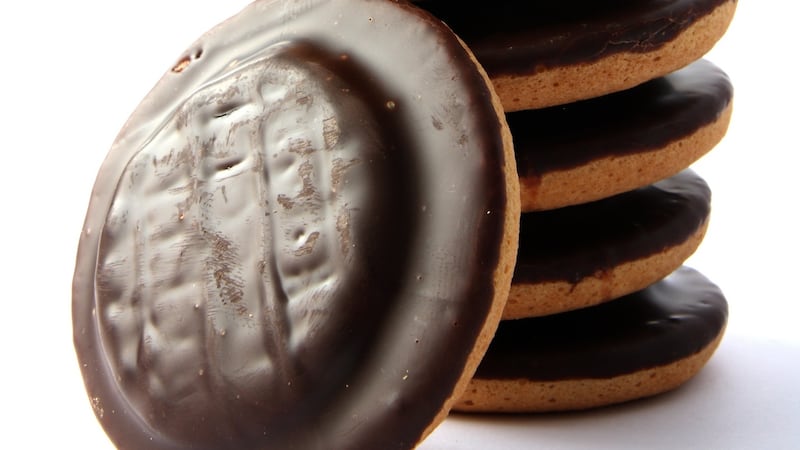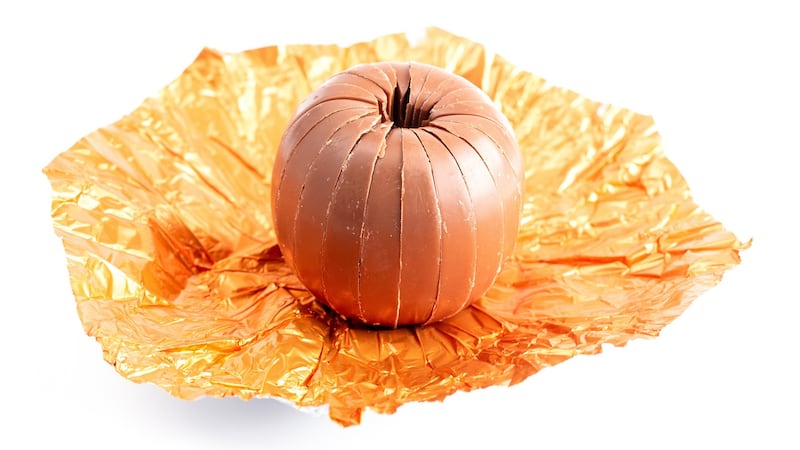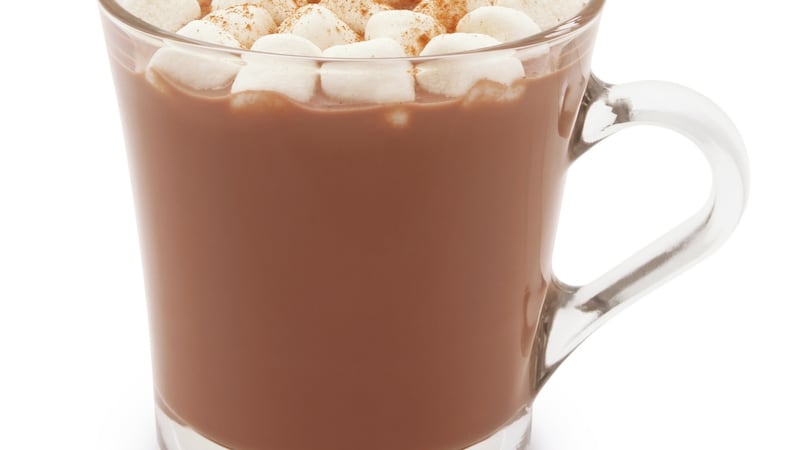It is not every week – or indeed any week – that Pricewatch gets to focus exclusively on something as lovely as chocolate. But with the nation set to eat its weight in the stuff next weekend in all its shapes and sizes, we seized the moment and we are not letting go!
Artisan: We are very luck to be very well served with all manner of fancy choclatiers in this country. And while you may well pay a bit more for the chocolate, it is almost always a price worth paying. Not only will you get a much better quality of chocolate, the hefty price tag might deter you from wolfing down bars and bars of the stuff mindlessly as you binge watch Call My Agent.
Bunny: Lindt, one of the pioneers in the world of chocolate, are also one of the pioneers of the chocolate bunny, which manages to marry two of the more mental Easter traditions – the eating of chocolate and the bunny. The blame probably rests with German Lutherans of times past. They gave the world – or at least their part of it – the Easter Hare. He or she had the job of judging whether children had been sufficiently good to get presents at Easter. They brought the notion to the US, where the judgey hare became a cute clothes-wearing bunny who eventually morphed into the chocolaty treat made by Lindt.
Cadbury: You can't really talk about chocolate and Easter without mentioning this company because without it we'd probably not have Easter eggs at all. It was born in 1824 when a Quaker by the name of John Cadbury started selling tea, coffee and drinking chocolate – which has an Irish link as you will learn soon – from a shop in Birmingham. It was sold with catch names such as Churchman's Chocolate and Iceland Moss. He then moved into the chocolate bar game, going head to head with Fry's of Bristol, who had produced the first chocolate bar. Cadbury started mass producing its Dairy Milk in 1905, while the first Milk Tray was made in 1915.
Dark: Dark chocolate lowers your blood pressure, improves blood flow, acts as an antioxidant, can improve cholesterol, protects your skin from the sun and makes you smarter. It also tastes pretty good. Makes sure it has 70 per cent cocoa and only have a couple of squares a day otherwise it may well lose some of its magical healing properties.
Eggs: Sorry, what's that? Why do we eat Easter eggs at Easter? We reckoned you would ask that question. Well, it all goes back to a thing that was forbidden. A long, long time ago the eating of eggs in the lead-up to Easter Sunday was not allowed. But the chickens didn't give a rashers about the rules, and kept laying them anyways. People had no choice then but to set aside their eggs before Easter – or their Easter eggs – and then eat them on the big day. Children were even known to go door-to-door begging for eggs. As a result it became popular to decorate eggs and give them to children. (Important note – don't try and fob painted chicken eggs off on children these days. It doesn't work.) The Victorians then took to making cardboard eggs which they covered with fancy material after filling them with small presents. And now back to our friends at Cadbury. The company made its first Easter egg in 1875 after developing a pure cocoa butter which could be moulded into smooth shapes. They were filled with chocolate drops called "dragees", the Carbury site tells us.
Flake: No, we are not talking about the crumbliest flakiest chocolate but the thing that makes a 99 a 99. But would you like to know why the lovely ice-cream that we will all hopefully be horsing into us in the days ahead is so called? Thank the Italians. Well, the Italians and the people at Cadbury. When Italy had monarchs the king was always assigned an elite guard made up of 99 soldiers and, as a result, things that were considered high end or top class became known as 99s. Fast forward to the 1930s, when Cadbury launched a little Flake specially for ice-cream cones. The ice-cream business was dominated by ex-pat Italians and to appeal to those key buyers Cadbury called its innovation a 99.

Gluttony: There is really too much chocolate eaten over Easter. Do you have to munch your way through every egg that comes into your home before the end of the Easter holiday?
Hot Chocolate: Did you know hot chocolate is Irish? We have a man by the name of Hans Sloane from Co Down to thank for it. Back in the day the good doctor travelled extensively in the Caribbean, and while he was there he came across cocoa as a drink mixed with water. He hated it, but worked out a way to mix it with milk. When he came back to this part of the world be brought his concoction with him. It attracted the interest of the Cadbury family, and the rest is history. Sloane also donated a collection of more than 70,000 items and artefacts picked up on his travels to the British nation, and that collection became the cornerstone for the establishment of the British Museum, the British Library and the British Natural History Museum. And if you have ever wondered who Sloane Square at the heart of Chelsea was called after, wonder no more. It was Hans.
Irish: When it comes to Easter eggs, Irish makers have you spoiled for choice this year. Yes, you could just wander into your local supermarket and load up the trolley with well known brands or you could make a conscious decision to shop local this year. We have said it before and we will say it again, spending more with local companies has a massive economic impact, it creates jobs and each tenner you spend can be worth almost €50 once it has been circulated over and over and over again by local businesses supporting local businesses. But more than that, the chocolate also tastes great. You have Koko Kinsale, Áine's Handmade Chocolate, Chez Emily, Gra, Butlers, Lorge and a whole lot more besides. You may well have missed the ordering boat for some of the websites but keep an eye on the shops and, as ever, shop local when you can. You'll be glad you did.
Jaffa Cakes: McVities invented Jaffa Cakes in the 1920s, but for reasons which are lost in the mists of time failed to trademark the name, allowing other brands to piggyback on their success. Another interesting thing – to us if not you – is that Jaffa Cakes are classified as a cake rather than a biscuit, which means they attract a lower rate of VAT in the UK.
Kisses: As in Hershey. If ever there was a company that failed to live up to expectations it was Hershey. Like many Irish people, we were brought up on American films which suggested the brand was just amazing. Then we tried it and it was distinctly underwhelming. And don't get us started on Oreo Cookies.
Layout: Have you ever noticed how the chocolate aisle in your local big supermarket is always at the end of the shopping path? And why in your local corner shop it is always at the till? Both placements are designed to make you buy. The reason the treat aisle is the second last aisle in the supermarket is because at that point you are tired and bored with your shopping and feel like you deserve a treat. The reason why the shelves near the tills groan under the weight of chocolate is because retailers know it is one of the most spontaneous purchases we ever make.
Mexico: Of all the claims to fame a country might have, gifting the world chocolate is a pretty good one. The honour falls to Mexico, and there are archaeological signs that the people of what is now that country were drinking something akin to hot chocolate around 4,000 years ago. The Mayans and the Aztecs were partial to it, and the word comes via Spanish from the somewhat trickier to pronounce Classical Nahuatl – or Aztec - word Xocolatl
Nestle: It is possible the world might never have tasted milk chocolate were it not for this company, although it did not invent it. In the 1860s in Switzerland, Henri Nestlé developed milk-based baby food, and months later a chap called Daniel Peter developing milk chocolate. Nestlé taught Peter how to remove the water from the milk in his chocolate, and in 1875 he managed to marry cocoa and condensed milk, after which Switzerland became the centre of milk chocolate production.
Orange: Have you noticed a glut of orange-flavoured chocolate in recent times? Back in the day – and we're talking about 2019 here – there was Terry's Chocolate Orange and the Jaffa Cake and that was largely it. Today, however, you can get Galaxys, Kit Kat, Buttons, Yorkies, Toblerones, Twirls, Magnums – yes, we said Magnums – and a whole lot more besides? Even the pizza people and Dominos muscled in on the act by launching orange-flavoured chocolate chip cookies last year. But what is going on? We found a recent quote from a chap called Barry Glazier, who is the director of chocolate science at Mars Wrigley, which shed a bit of light on the orange crush. "Orange and chocolate is one of those winning combinations that never gets old. It is often linked to nostalgia in many countries, and has been in desserts and chocolate treats for generations, with the popular flavour combination dating back to the 1930s." We have also heard that there is surplus of orange oil at present, and confectionary companies are working out ways to use it up before it spoils.

Pudding: The rise of the chocolate pudding has been unstoppable in recent years, thanks in large part to Nigella. We are eternally grateful to her for that.
Queues: They are everywhere now, and there is a very good chance you will find you have to stand in one before getting you festive fix this year.
Ruby: First there was dark, then there was milk and white and now we have ruby. This variety was invented in 2017 by Barry Callebaut, a Belgian-Swiss cocoa company, after almost 15 years of trials. We can't actually recall having tasted it, but we do love the name.
Shrinkflation: Here are quotes from two newspapers two years apart. The first is from last week. "Cadbury's large Crunchie and Creme Egg Easter eggs have dropped in weight by almost 10 per cent – from 258g in 2019 to 233g this year – and its Heroes egg has shrunk by 7 per cent from 254g to 236g." The second is from 2019. "According to the trade magazine The Grocer, the chocolate giant's Crunchie and large Creme eggs will both come down from 278g to 258g, a reduction of around 7 per cent." Now the eagle-eyed among you will instantly see that the two eggs in question have fallen in size from 278g in 2018 to 233g this year. That is a decline in weight of more than 16 per cent. And have the prices of said eggs fallen by the same amount? No, no they have not. Welcome to the world of shrinkflation. It doesn't only impact Easter eggs or even chocolate, but the practice of making everything about a product smaller except its price is very commonly seen in the treat aisle. Manufacturers typically blame increased demand for cocoa combined with poor yields as a result of climate change.

Terry's: There aren't many chocolaty treats that are defined by a single advertising slogan, but this orange-flavoured chocolate egg which comes handily split into segments is one of them, and few people will be reading this sentence without already thinking to themselves: "It's not Terry's it's mine." The first Terry was chemist Joseph Terry who joined a York sweets company in 1823 and concocted a chocolate made with candied peel and marmalade. Just over 100 years later and still in the Terry name, the Chocolate Orange was launched. In 1979 the Chocolate Lemon was launched, but that did not do so well. It had some less good advertising slogans too. "Tap it and unwrap it" and "Don't tap it... whack it!" have not proved to be so enduring.
Valentine's Day: Yes, yes, we know the day of love is behind us – or ahead of us, depending on your perspective – but it is also a day intimately associated with chocolate. It wasn't always that way. Food and Valentine's Day did not hook up until just over 100 years ago, and back then conversation lozenges were what people used to sweep other people off their feet. And what are conversation lozenges? Well, they were invented by an English chap called Joseph Dobson, who had made his small fortune making wedding cakes and funeral biscuits. Richard Cadbury realised he could sell more chocolates in February if he decorated his boxes with love motifs. His idea was that recipients could hang on to the boxes and use them to hide secret love letters.
White: White chocolate is made with cocoa butter, sugar and milk solids but without cocoa solids hence its colour. It is – comparatively speaking – a new kid on the block. It first appeared in 1936 under the less than lovely sounding brand Galak, which was made by Nestlé. And that is enough about that because, in Pricewatch's opinion, it is an abomination.
X: Xtrata large? Xerox? No, we give up, we can't find an X word we can link to chocolate. If you can please feel free to let us know. We'd be ever so grateful.
Yorkies: Some readers will be old enough to remember when the chunky chocolate bar first hit our shelves in the mid-1970s. Back then its unique selling point was its size. It was, we were told "good, rich and thick", which was why truckers relied on it to get them through the day. Back then a bar weighed 70g. Today a Yorkie weighs 46g, hardly enough to get a trucker from Dublin Port to Harry's in Kinnegad. We don't believe the price has fallen by the same amount.
Zesty: A trend of late is to add the zest of fruit to chocolate. Bean & Goose, Skellig and others are working wonders with the stuff.













